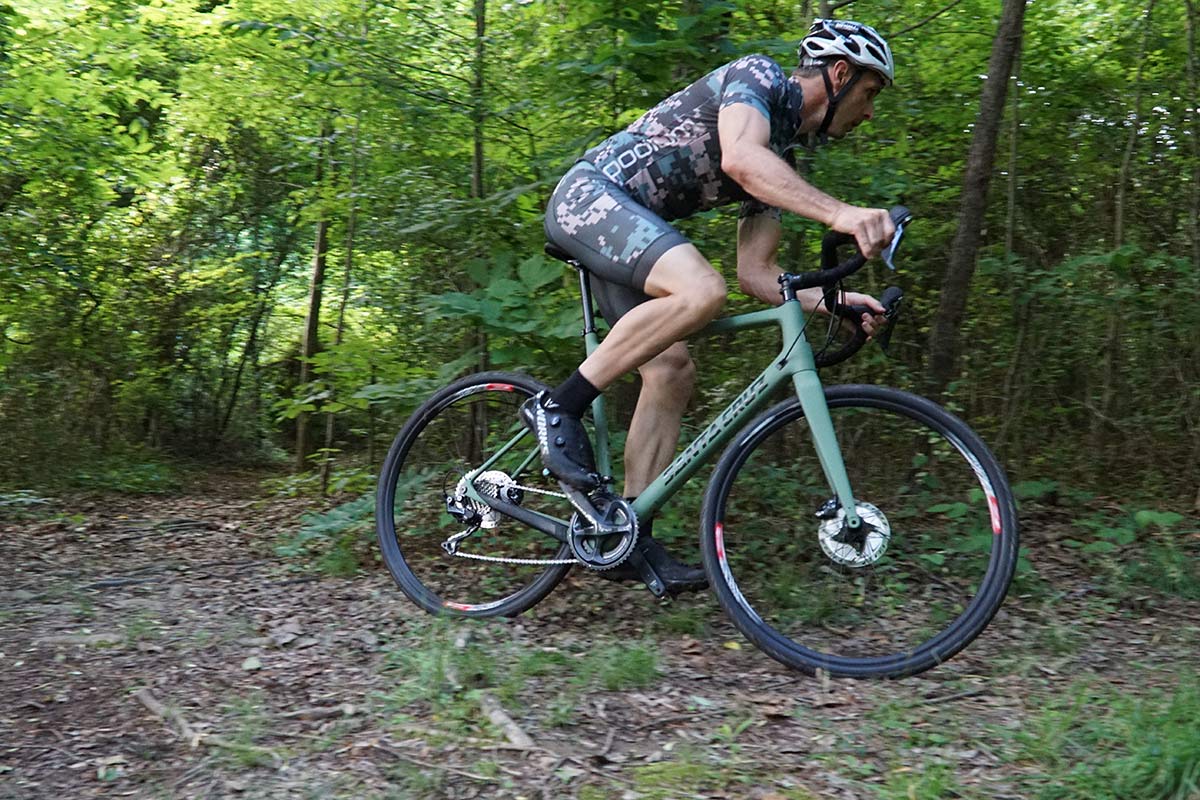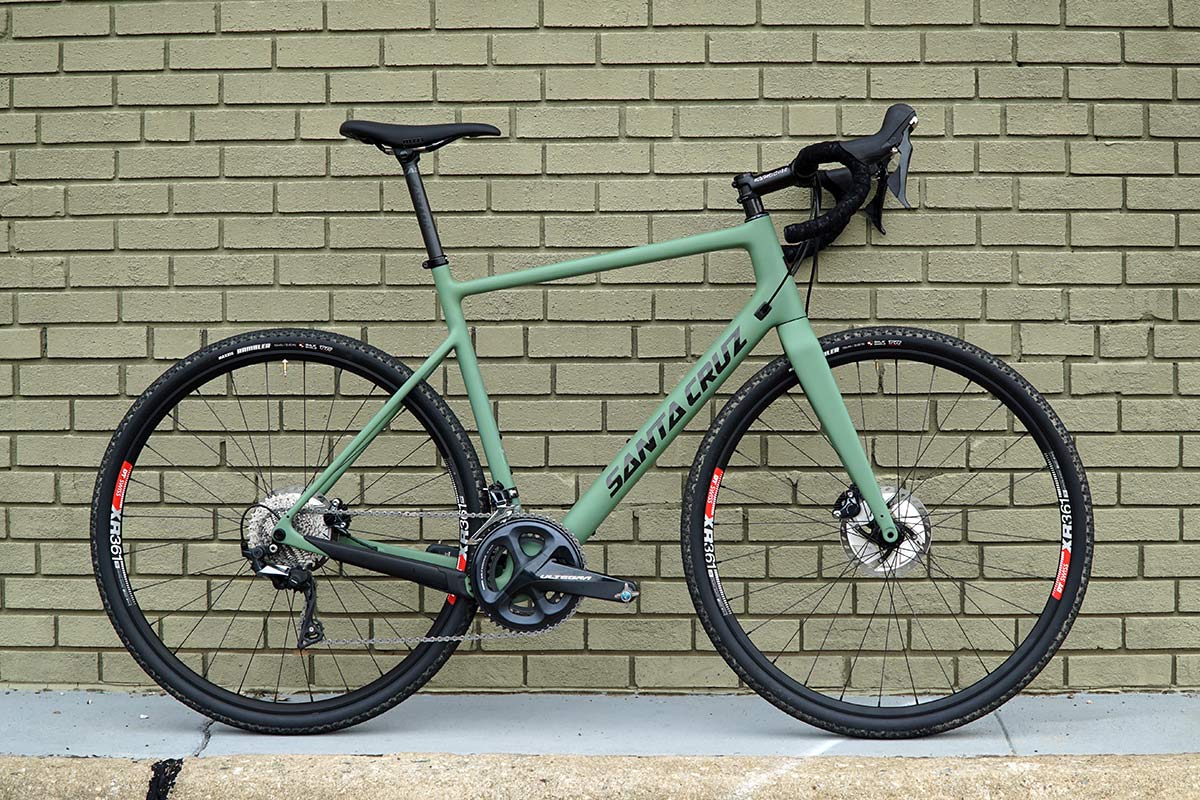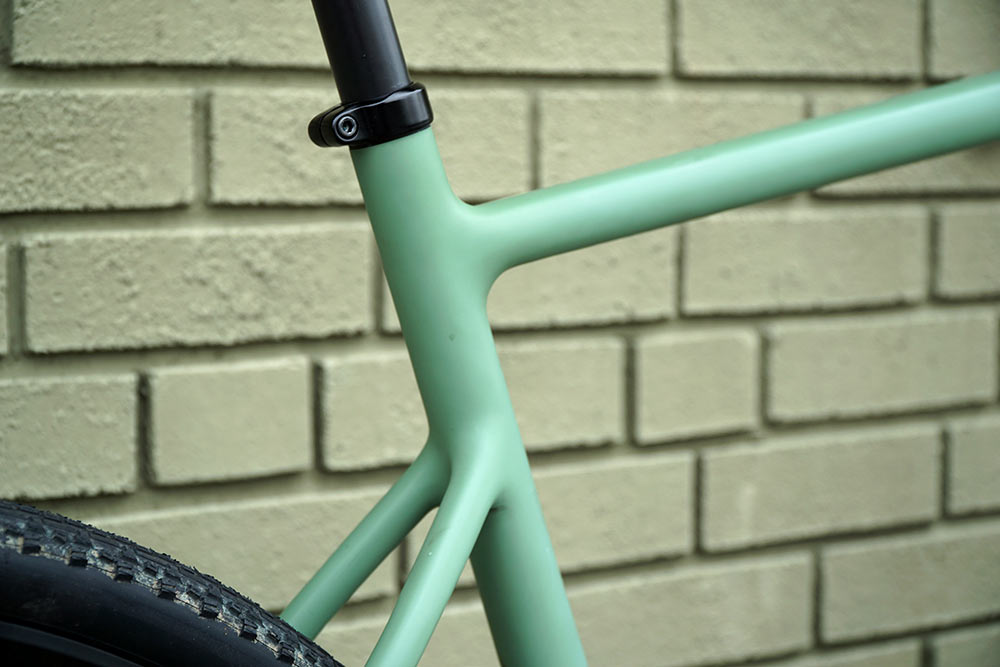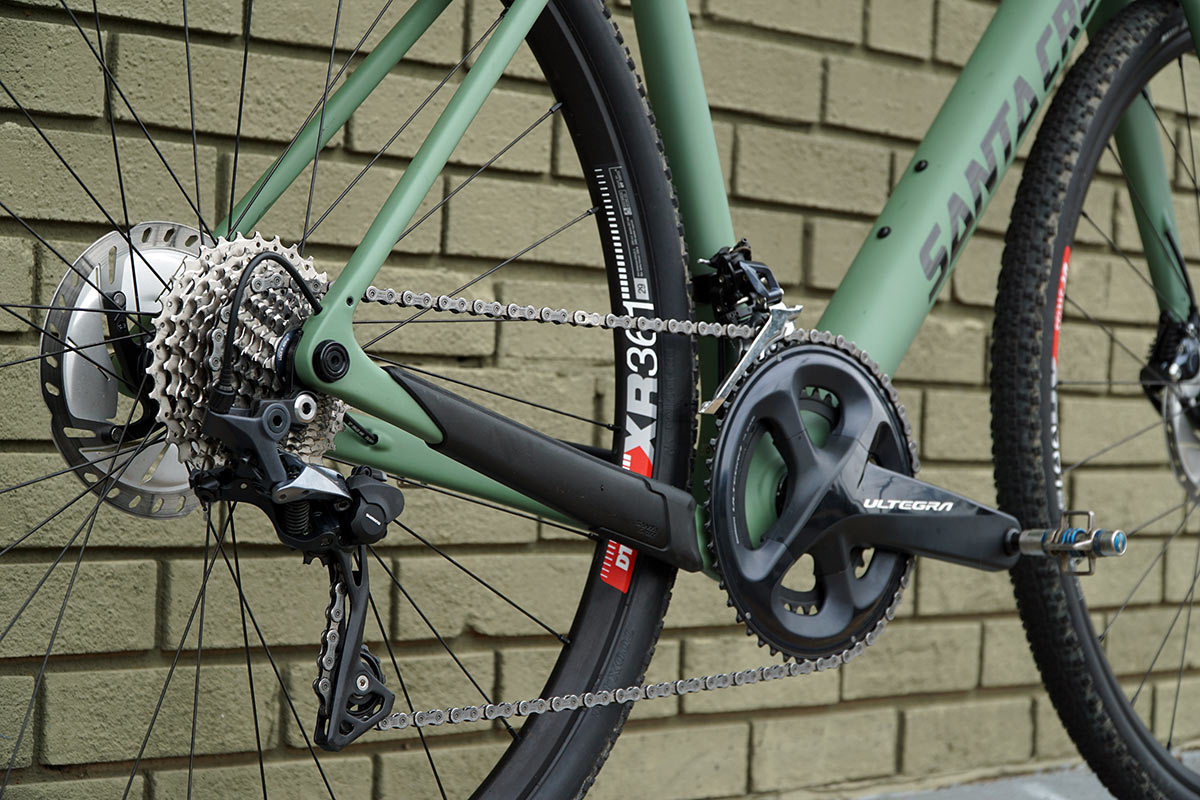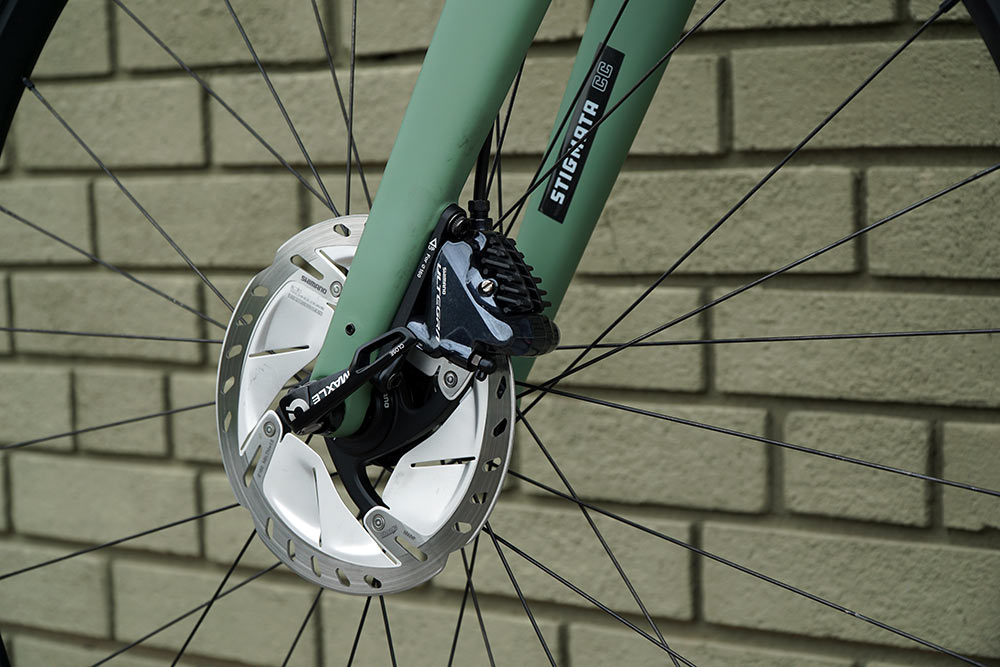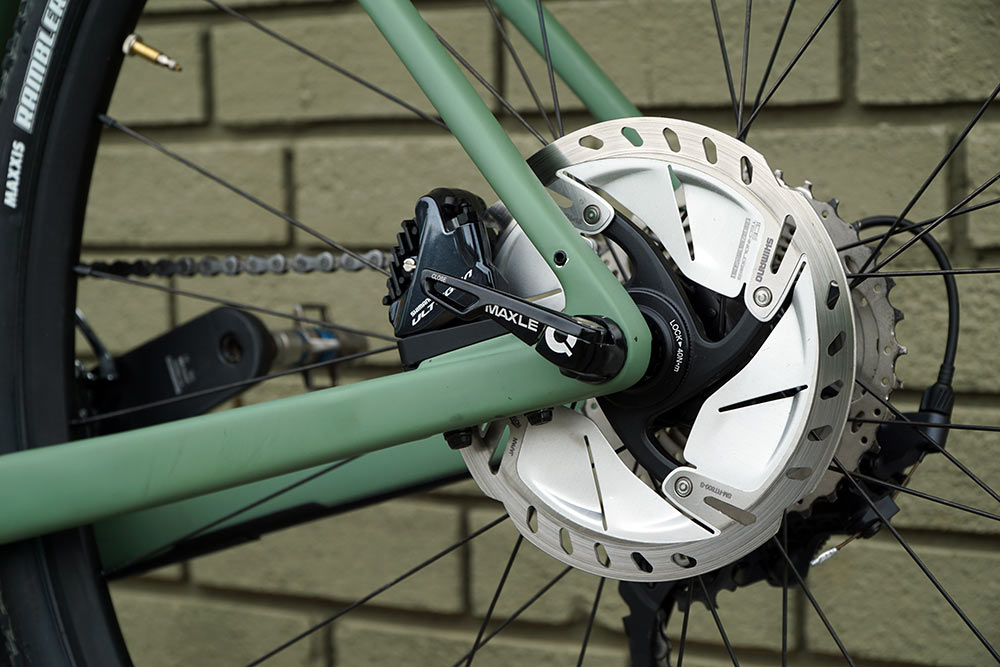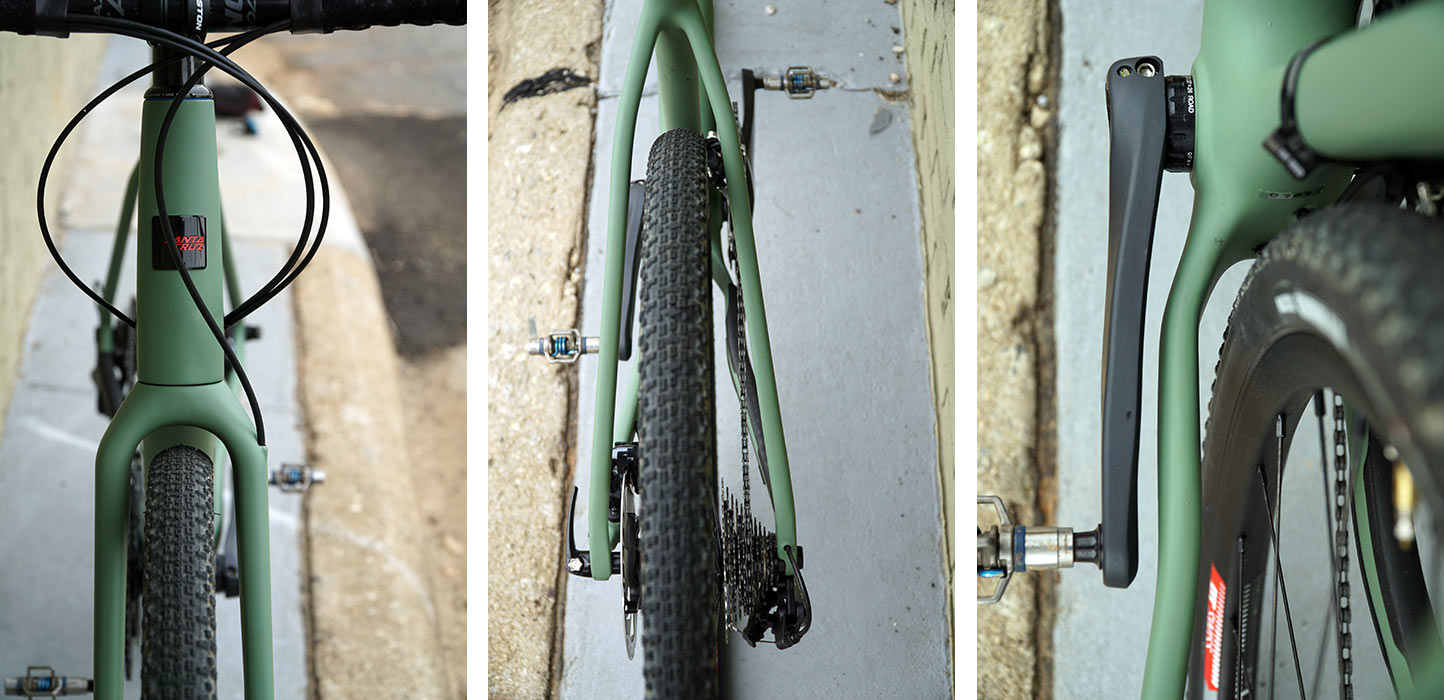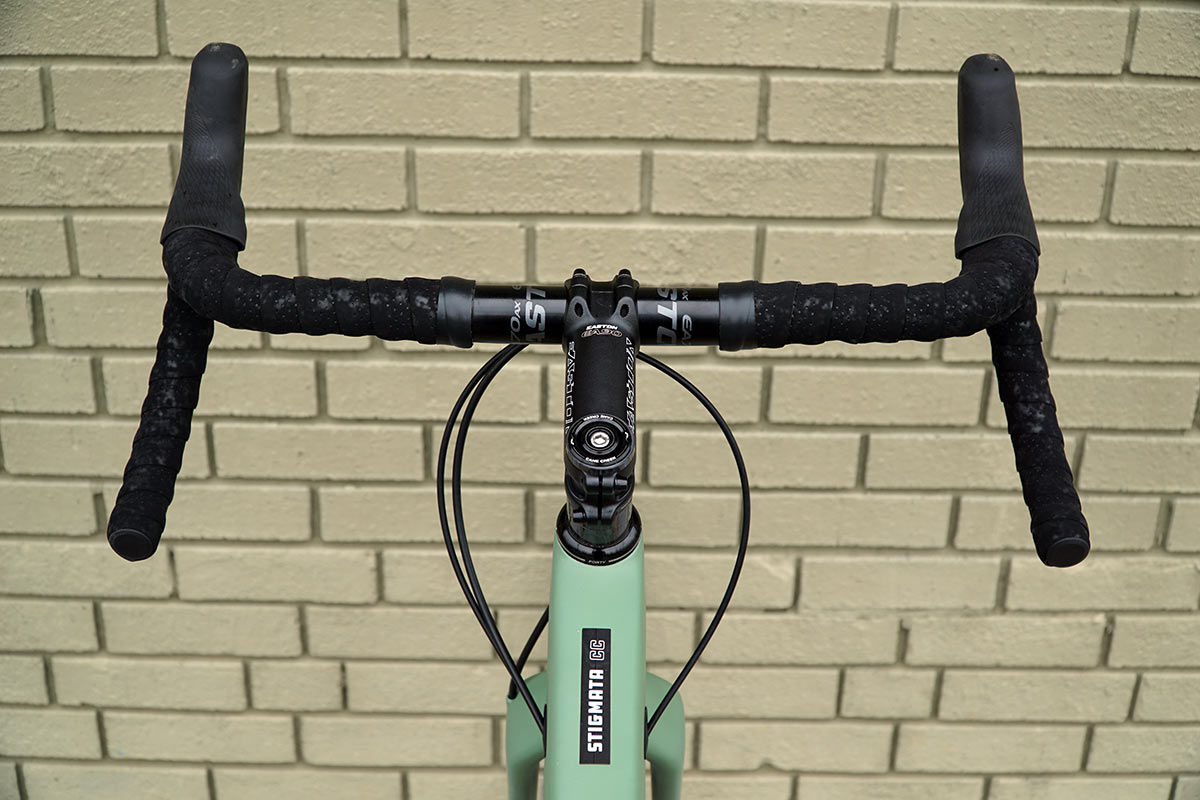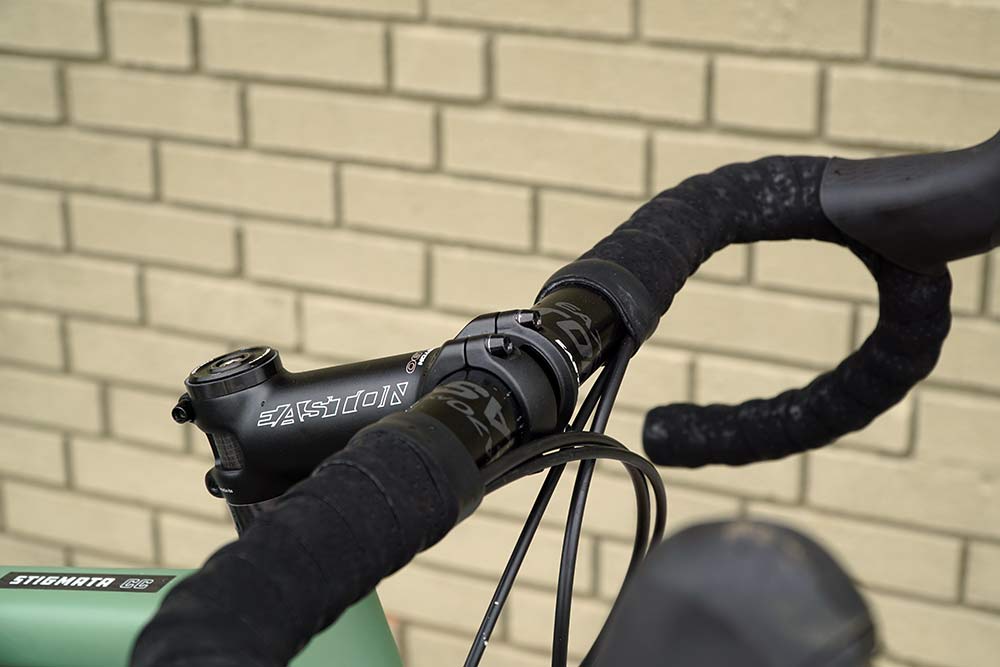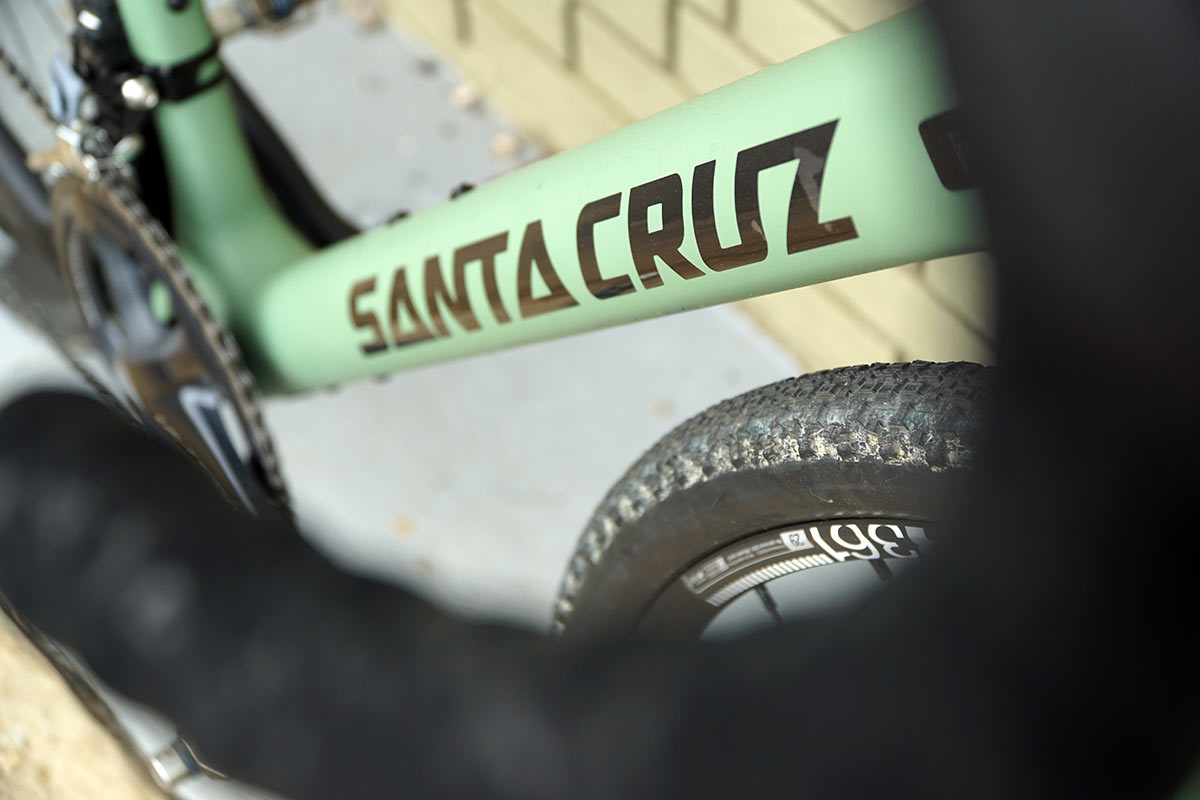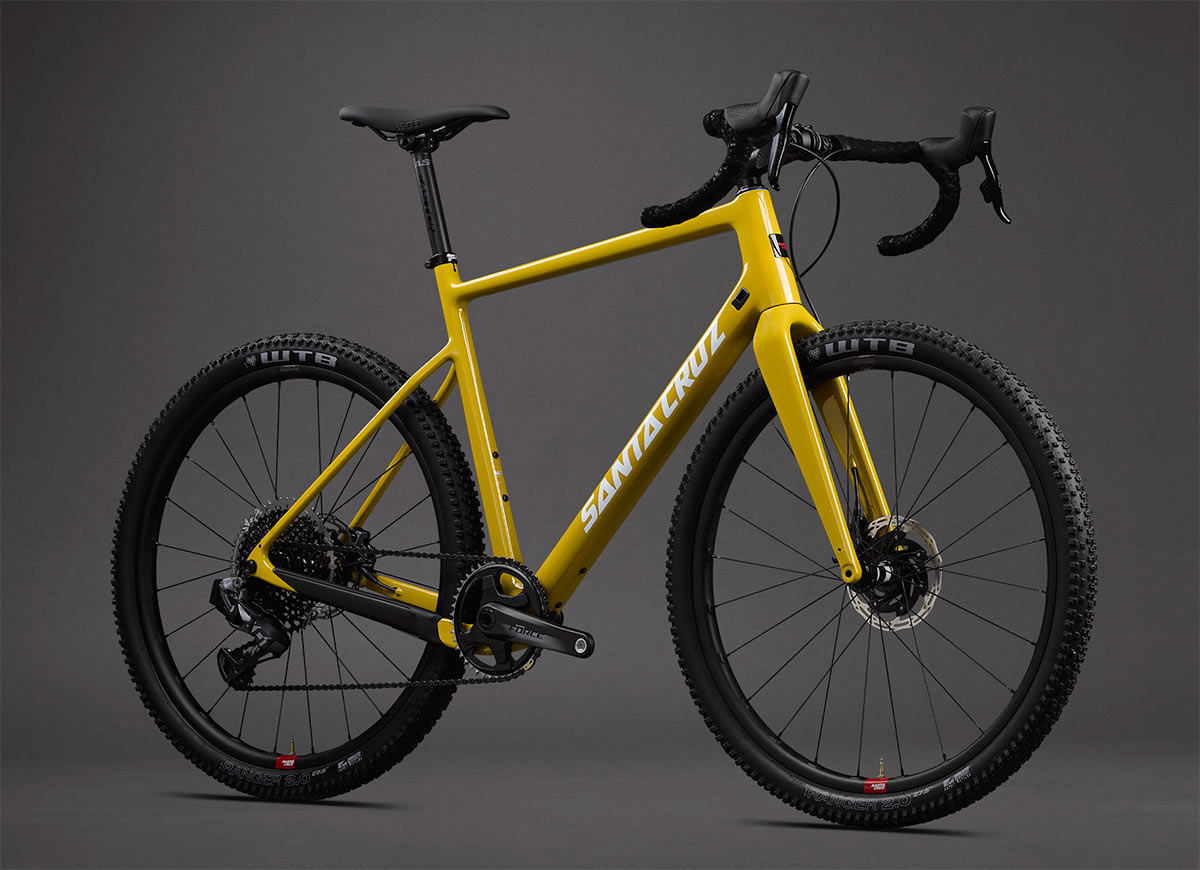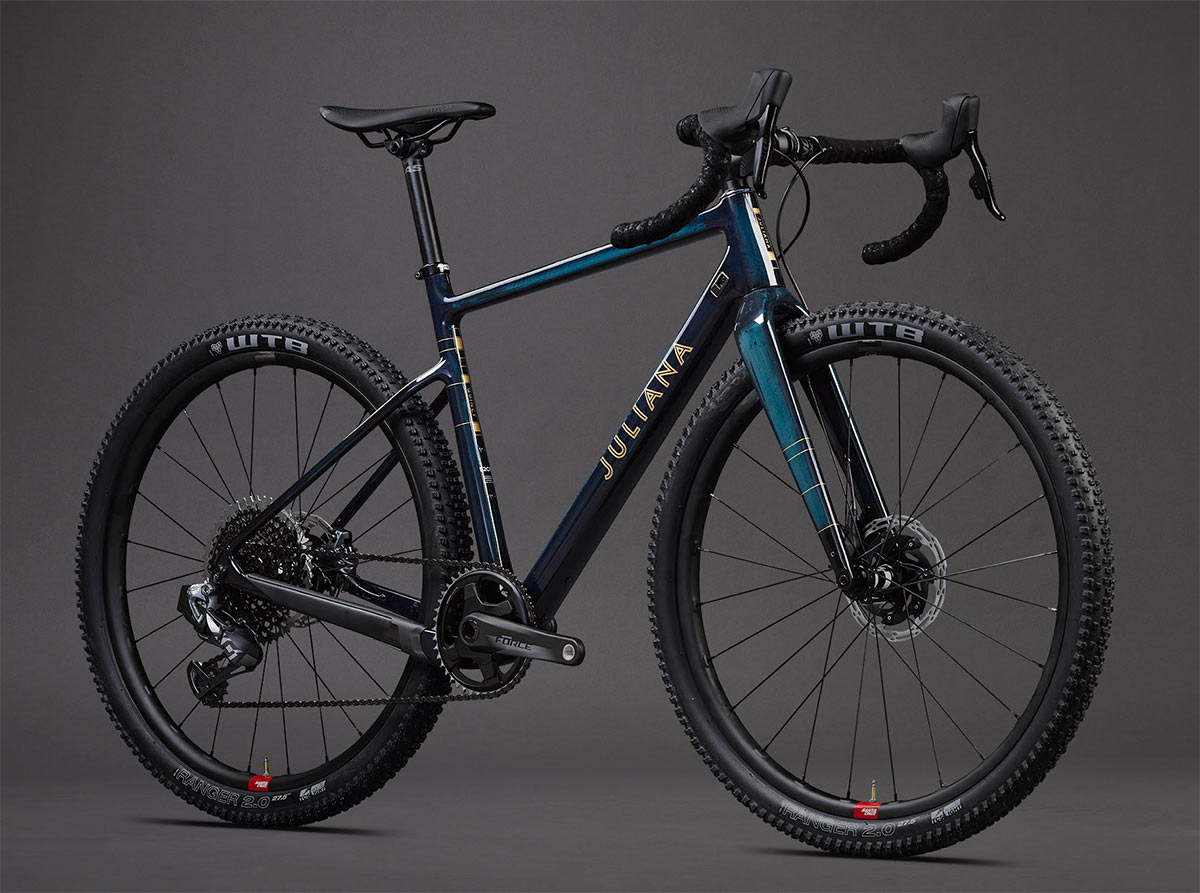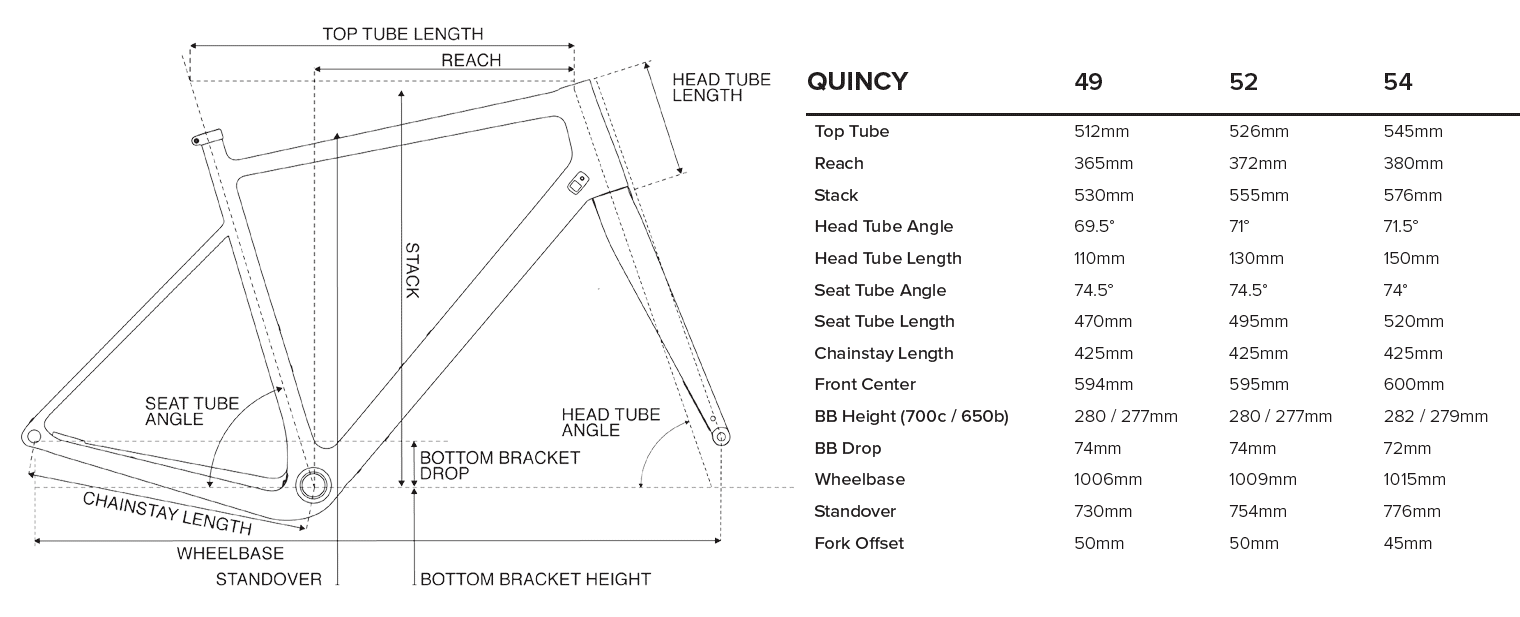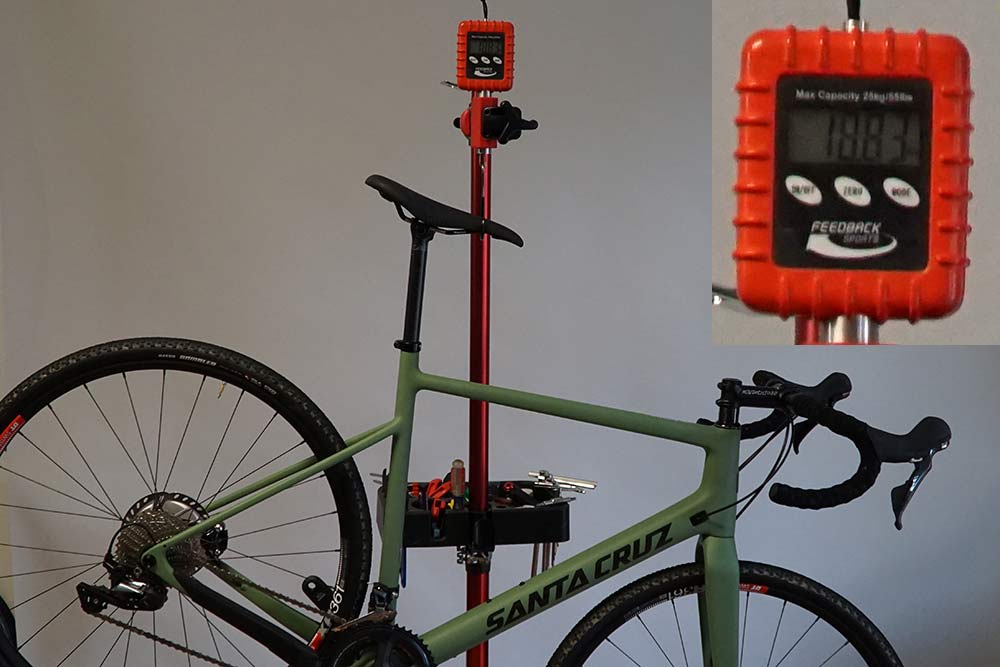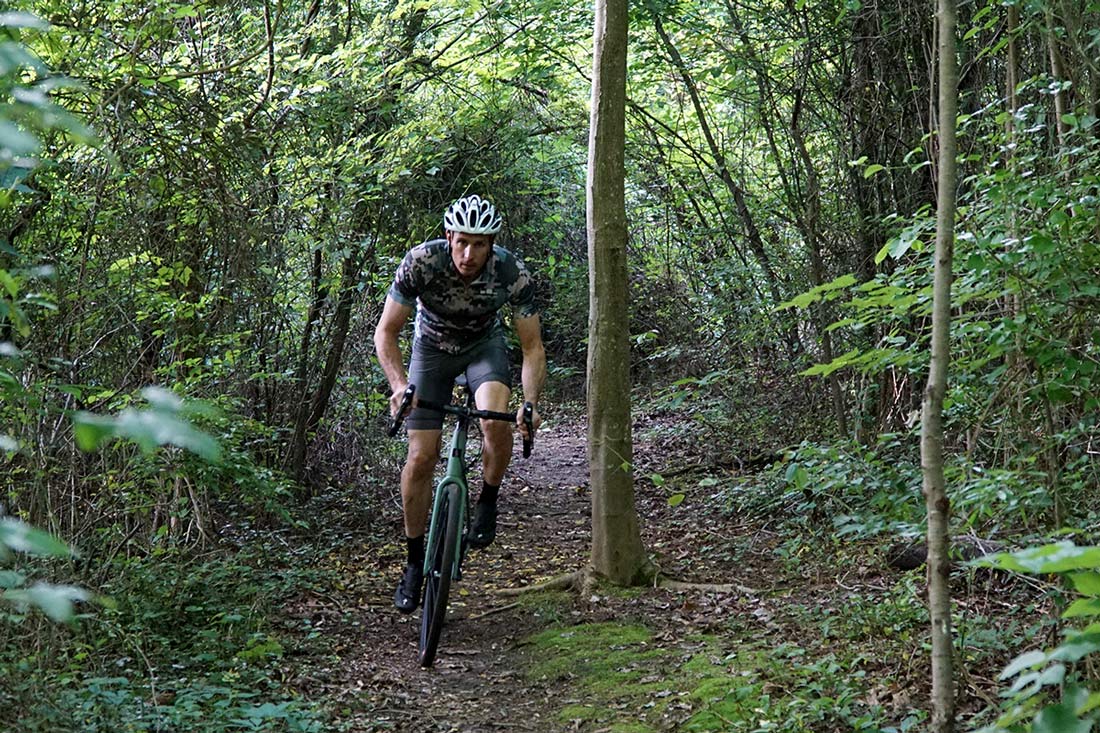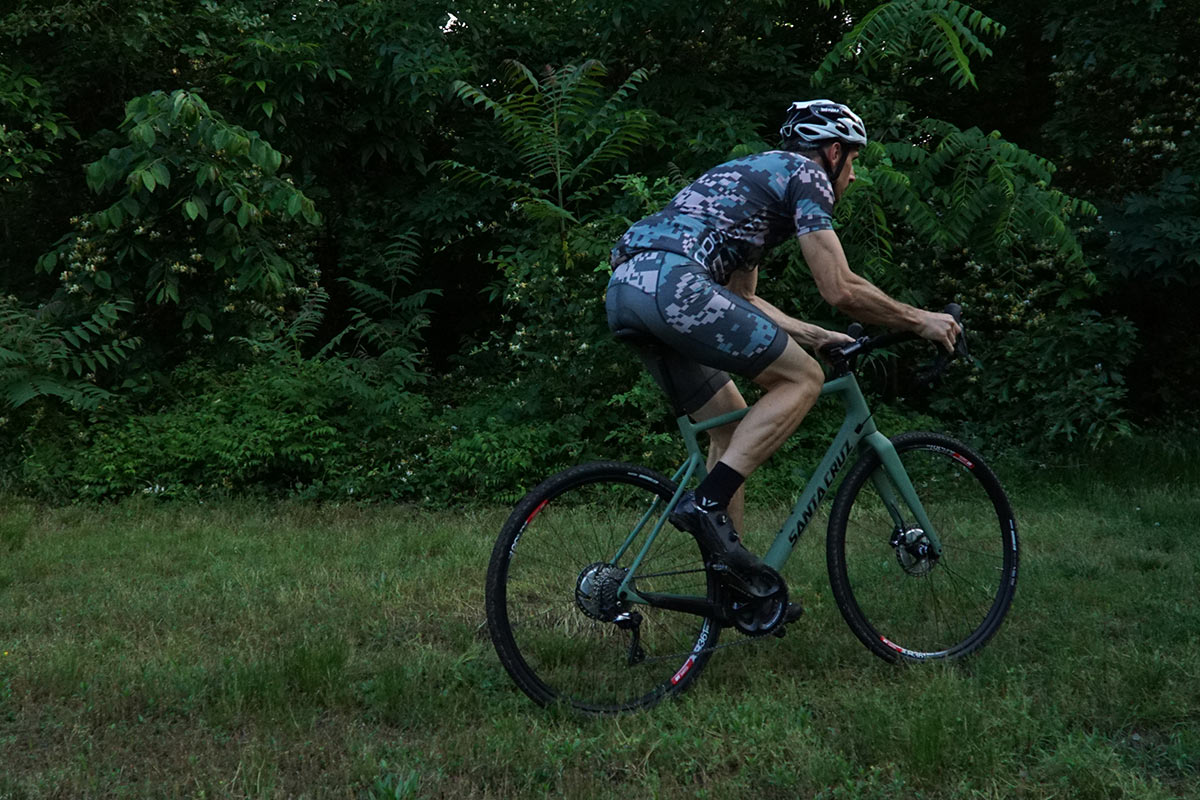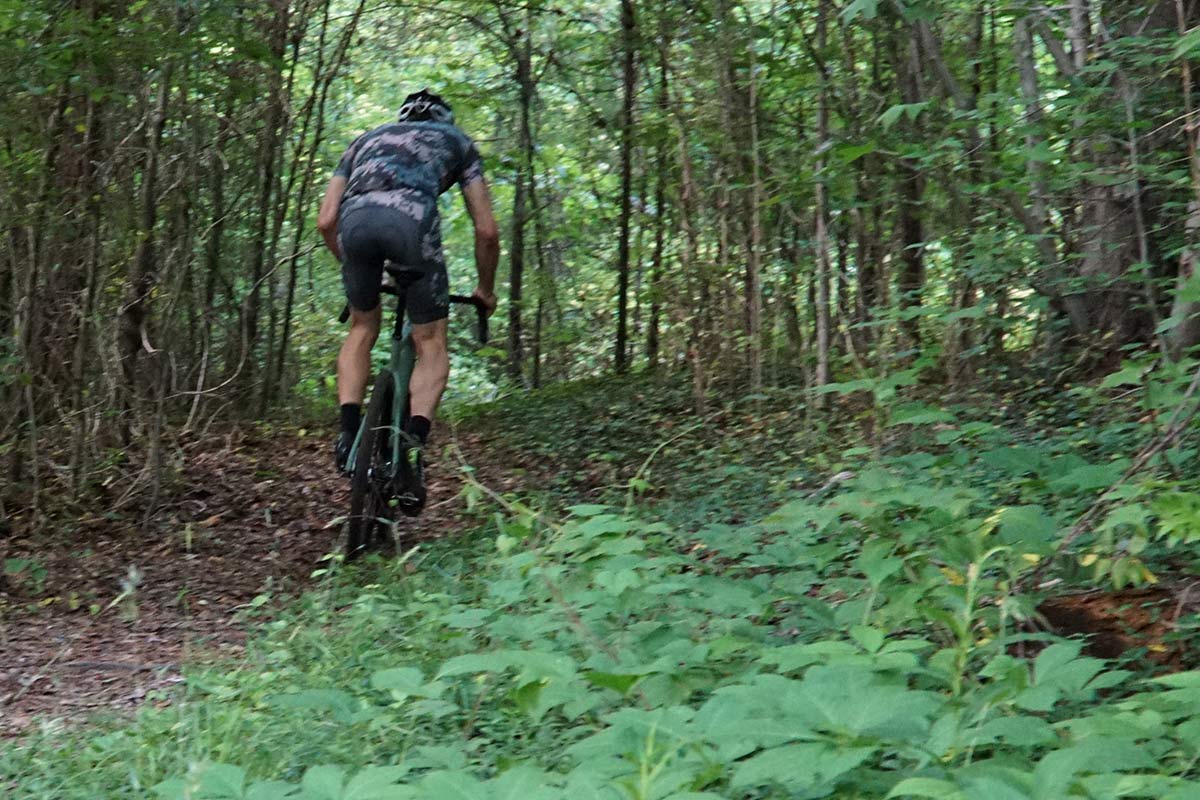If a drop bar bike is going to leave its mark in this day and age, it better be able to handle more than one surface. And that’s exactly what the new Santa Cruz Stigmata does. What used to be easily defined as the brand’s cyclocross bike, the new Stigmata is a littler harder to classify. But if we had to pick something, we’d say it leans more toward gravel and all-road riding than pure ‘cross. Thankfully, it hasn’t forgotten its roots…
Let’s start with what makes it a cyclocross bike. The new frame gets a revised layup that’s tougher than ever thanks to sharing some carbon strategies with their Highball hardtail mountain bike. They also say they borrowed a few tricks from the construction of Danny MacAskill’s bikes to be sure it wouldn’t crack under the pressure of a CX race.
The headtube is plenty stout to provide a sharp steering response…
…and a 27.2 seatpost with dropped seatstays helps keep things comfortable over patchy grass and frozen ruts.
Lastly, a big bottom bracket section helps deliver all your power to the rear wheel, and there’s decent ground clearance, too. Everything runs internal, and there are virtually no sharp angles anywhere on the bike to hold grass or mud or snow. But the rest seems designed with gravel in mind.
So what makes it a gravel bike?
Double chainring compatibility for one. No self-respecting modern cyclocross bike would run a front derailleur, but the new Stigmata offers the ability to run a 2x setup with a clamp-on FD mount. And, their top level stock build is a SRAM Red eTAP AXS bike with 2×12, with this Ultegra 2×11 mechanical build underneath it. Of course, 1x options will be offered, also.
Other all-road/commuter/gravel friendly touches include barely-there fender mounts near the dropouts, behind the fork crown and behind the BB shell.
12mm thru axles keep front and rear stiff, and flat mount brakes slow you down.
Tire clearance is up to par for modern gravel racers with the ability to run 700×45 or 650B x 2.1″ wheel and tires. No, that’s not the biggest clearance around, which (along with other design cues) suggests this one’s meant a little more for the racer than the ultra-endurance adventurer.
The frame holds three water bottle cages – two inside the front triangle, one underneath, just above the BB. They sit low, leaving room for strapping a frame bag into place above them. But there are no fixed mounting points for any bags, including a top-tube bento box.
The build kit for our test bike used Easton’s excellent gravel parts, with their flared handlebars. For ‘cross, they might be just a bit too flared out, but for gravel and rough roads, they’re one of our favorites.
The stem has 0º bend, so it keeps you more upright…also good for long distance gravel riding.
Words are great, but is there a video?
Yep, and you can get more of our killer tech videos and first looks by subscribing to Bikerumor’s YouTube channel here.
What about the geometry?
The bike comes in Mustard Yellow and Olive Green, the latter having a slick masked logo that lets the carbon’s layers show through. But that’s not geometry…this is:
Here’s another area where the bike becomes decidedly more gravel than cyclocross. While the wheel base matches up with some other popular CX bikes we’ve tested, it’s the front end that skews towards stability over razor sharp handling. The head angle is just a fraction slacker, and the fork’s rake gets a little shorter to create more trail on most sizes. At 45mm rake (aka “offset”), that’s shorter even than aftermarket options like ENVE. The result is a bike that’s going to be more stable at speed, which is great for faster dirt road miles. Keep reading for a little more on the geo…
Full pricing and build options are available on their website, link at bottom of post. Bikes will also have the option to upgrade to their new 700c and 650b carbon Reserve wheels that launched at NAHBS.
Is there a women’s version?
Why yes, it’s called the Juliana Quincy. Like other Santa Cruz-to-Juliana conversions, this one shares the same frames but gets different colors and uses smaller/narrower cockpit parts and a women’s specific saddle to help it fit smaller, lighter riders better.
It also adds a smaller size. Where the Stigmata runs from 52 to 60, the Quincy gets a 49 on the low end to fit riders 5’0″ tall and possibly just a bit shorter, too. The geo charts have a typo, both models use a longer 50mm fork offset on the smallest sizes, up to 54cm frames, then switch to the 45mm offset.
Stigmata first rides & actual weight
Our size 58 came with DT Swiss wheels, Maxxis Ramber tires set up tubeless, and an Ultegra 2×11 mechanical group with hydraulic disc brakes and their clutched RX rear derailleur. Out of the box (without pedals), it came in at 18.83lb (8.54kg). We imagine it’d be pretty easy to drop a pound off this by going to a 1x system.
I’ve only got a few rides in before this story went live, with most of the miles on a mix of pavement and fine gravel. Here, the bike was great. Fast, stable and easy to ride. The layup wasn’t just revised to be tough…they also tuned it to be “all day comfortable” so it could live up their billing as “a road bike for mountain bikers.”
Powering through grass and up casual slopes proved no problem for the bike. While it might improve aesthetics to put a negative rise stem on it, I’m digging the position it put me in without having to use a giant stack of spacers. For ‘cross, I might move one of those spacers above the stem, but for longer rides off the race course, it came set up very nice.
First impressions are good. I was able to cut through the trails behind our usual ‘cross training grounds and pop around corners pretty well, but I haven’t really put it through the paces of a cyclocross race…simulated or otherwise. I’m curious to see how the changes to its geometry affect the race-ability. But with more people gravitating toward dirt roads than hopping barriers, it seems the Stigmata probably made a turn down the right path. Stay tuned for a long term review later this summer.
